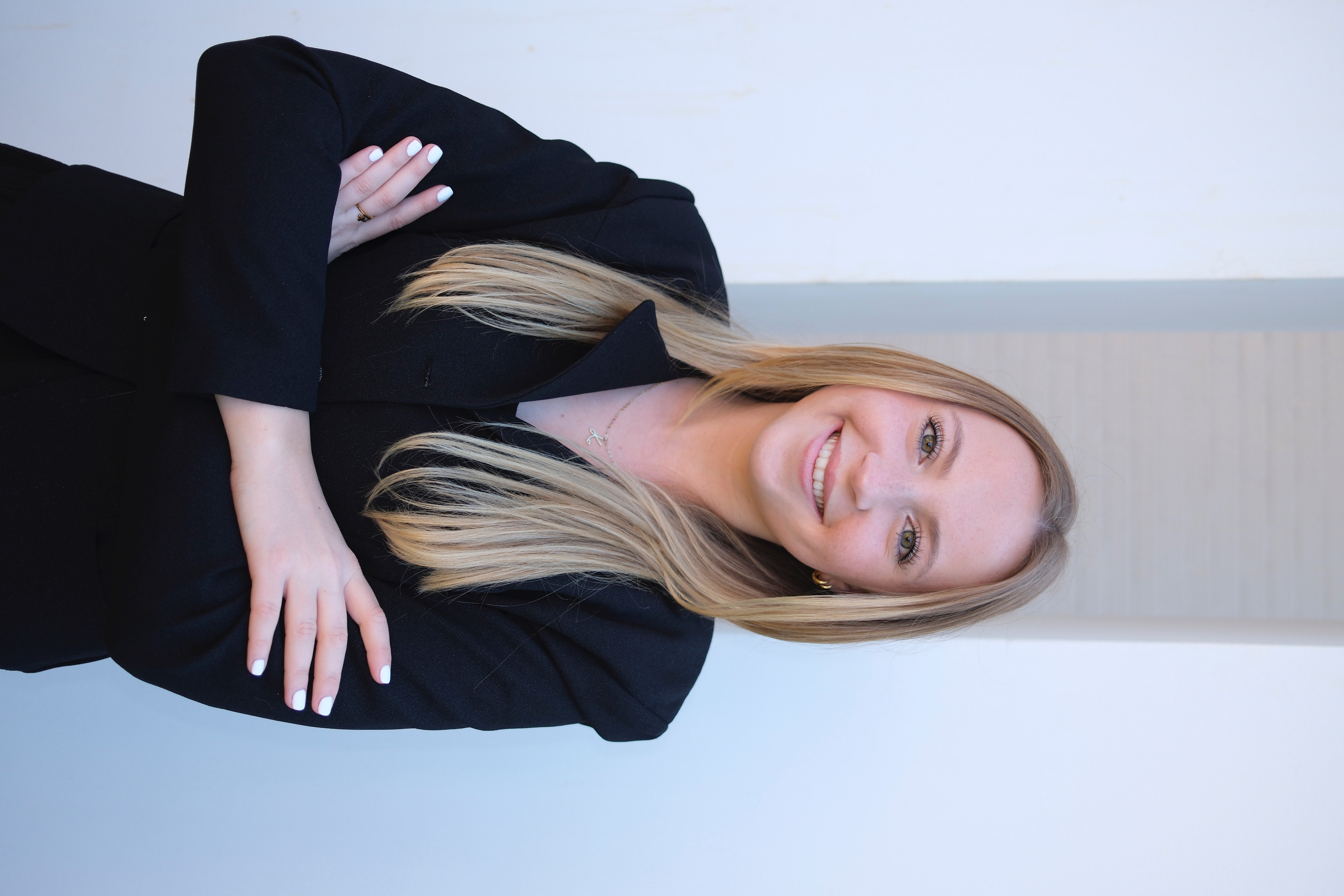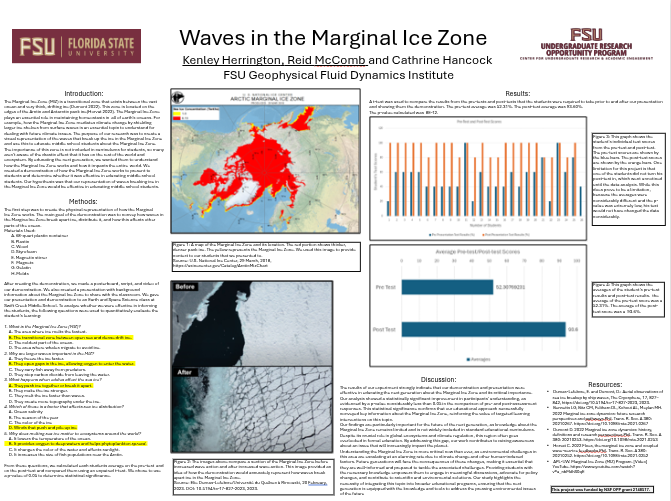Research Symposium
25th annual Undergraduate Research Symposium, April 1, 2025
Kenley Herrington Poster Session 1: 9:30 am - 10:30 am / Poster #218

BIO
My name is Kenley Herrington and I am a sophomore double-majoring in Environmental Science and Secondary Education at Florida State University. I am originally from Birmingham, Alabama, but I have lived in Tampa, Florida for the past few years. Living by the ocean sparked my passion for environmental science and is what pushed me to pursue a career in the field. My future career goal is to be an environmental scientist and work in conservation, specifically with the ocean.
Waves in the Marginal Ice Zone
Authors: Kenley Herrington, Cathrine HancockStudent Major: Environmental Science/Secondary Education
Mentor: Cathrine Hancock
Mentor's Department: Geophysical Fluid Dynamics Institute Mentor's College: Florida State University Co-Presenters: Reid McComb
Abstract
The purpose of our research was to create a physical representation of how waves in the Marginal Ice Zone break up sea ice and then present this demonstration to students between 6th and 8th grade. We investigated this to determine how effective our demonstration was at educating students about the Marginal Ice Zone. This project is relevant to everyone in our community because it is of high importance that people begin to understand and spread knowledge of what goes on in our oceans. Through examining the ice in the Arctic Ocean, we can see how drastic changes affect the entire world. By educating the youth, we aim to spread a clear and impactful message to those around us of these issues. Our methods were to create a physical demonstration that the students could see to visualize how the Marginal Ice Zone works. We did this by using various objects and tools such as wood, a plastic container, a magnetic stirrer, magnets, gelatin, Styrofoam, and molds. From presenting our demonstration to middle school students and testing their knowledge with a pre-test and post-test, we found that our demonstration did increase their knowledge on the Marginal Ice Zone. We used a t-test to analyze our data and found that our results were statistically significant. With our data being statistically significant, we can conclude that presenting the topic with a hands-on demonstration was effective in the students' understanding of the project.
Keywords: waves, ice, education, Marginal Ice Zone


